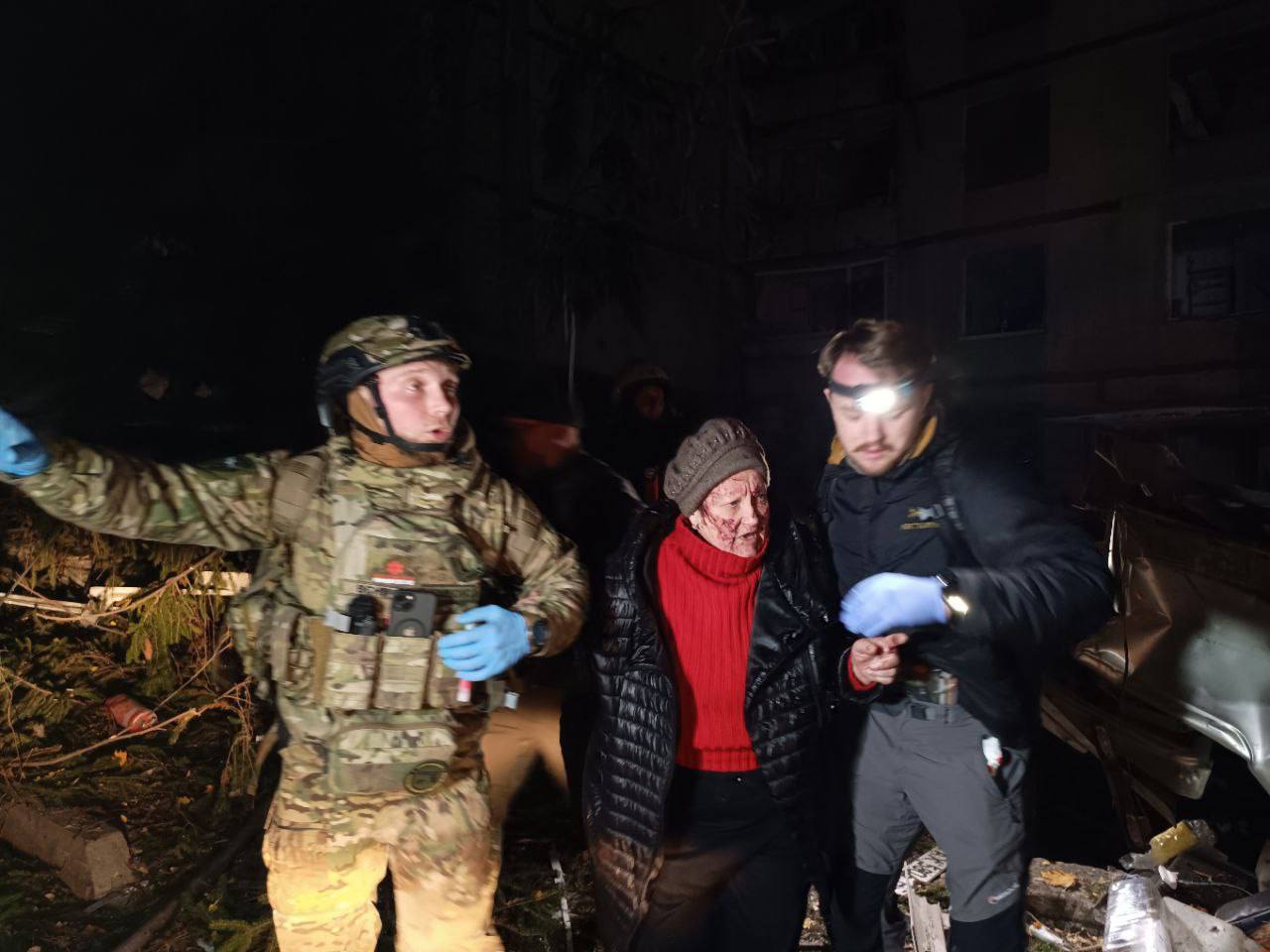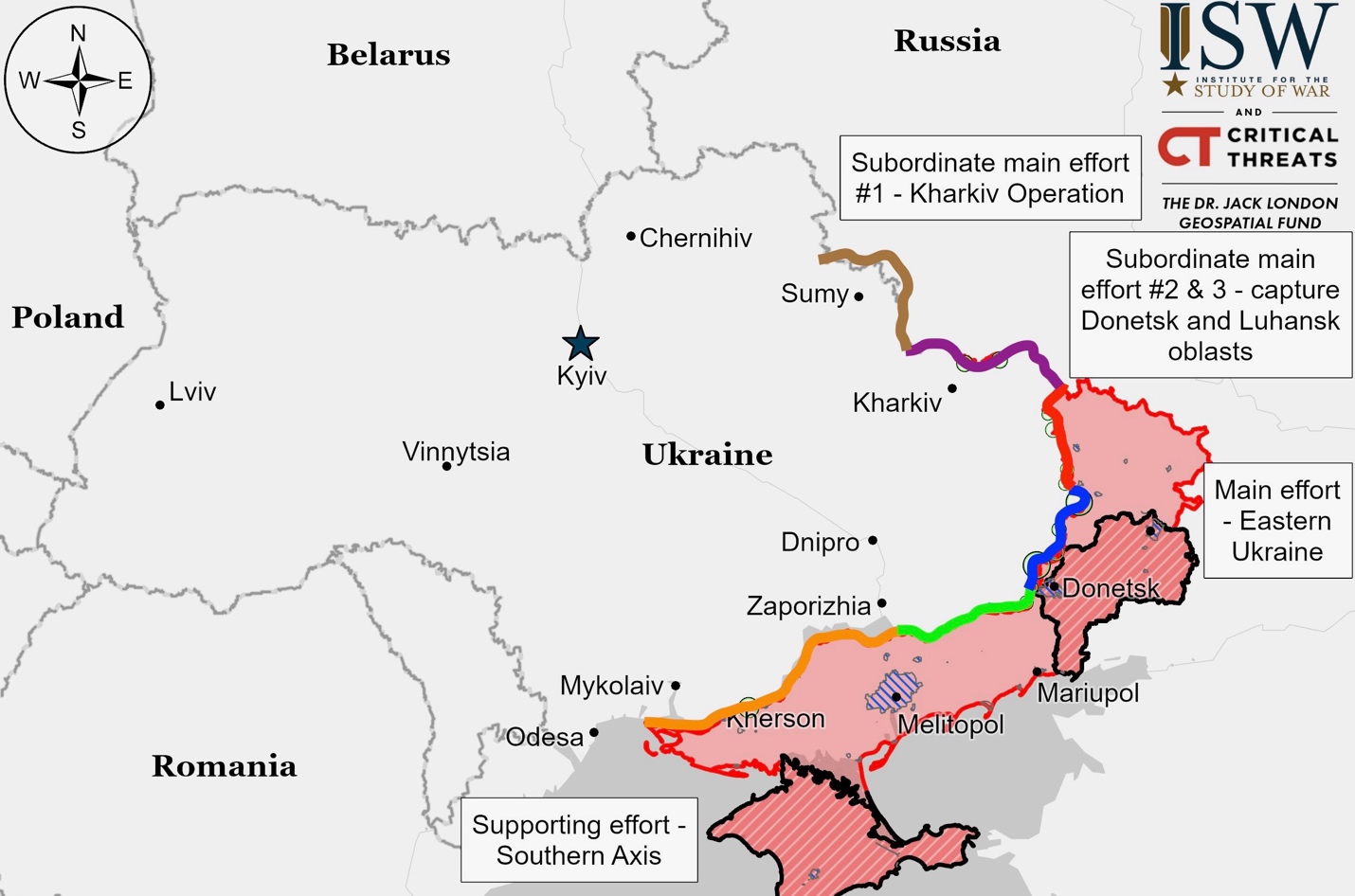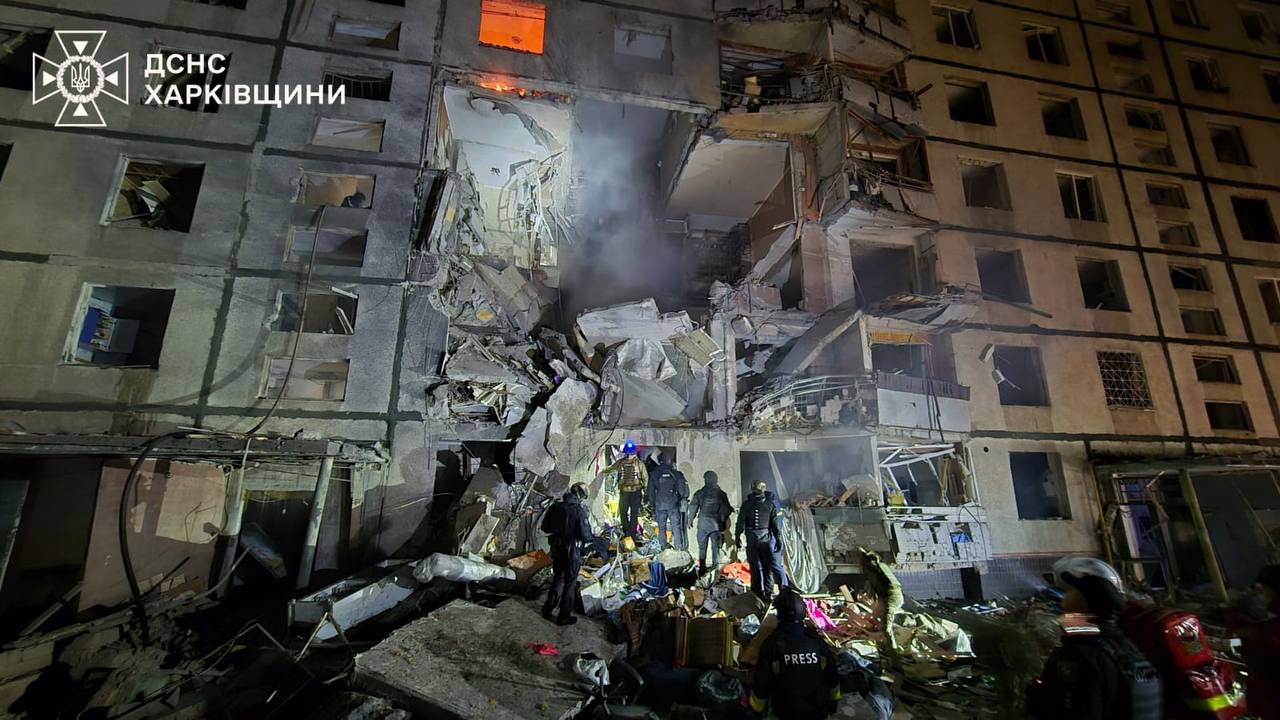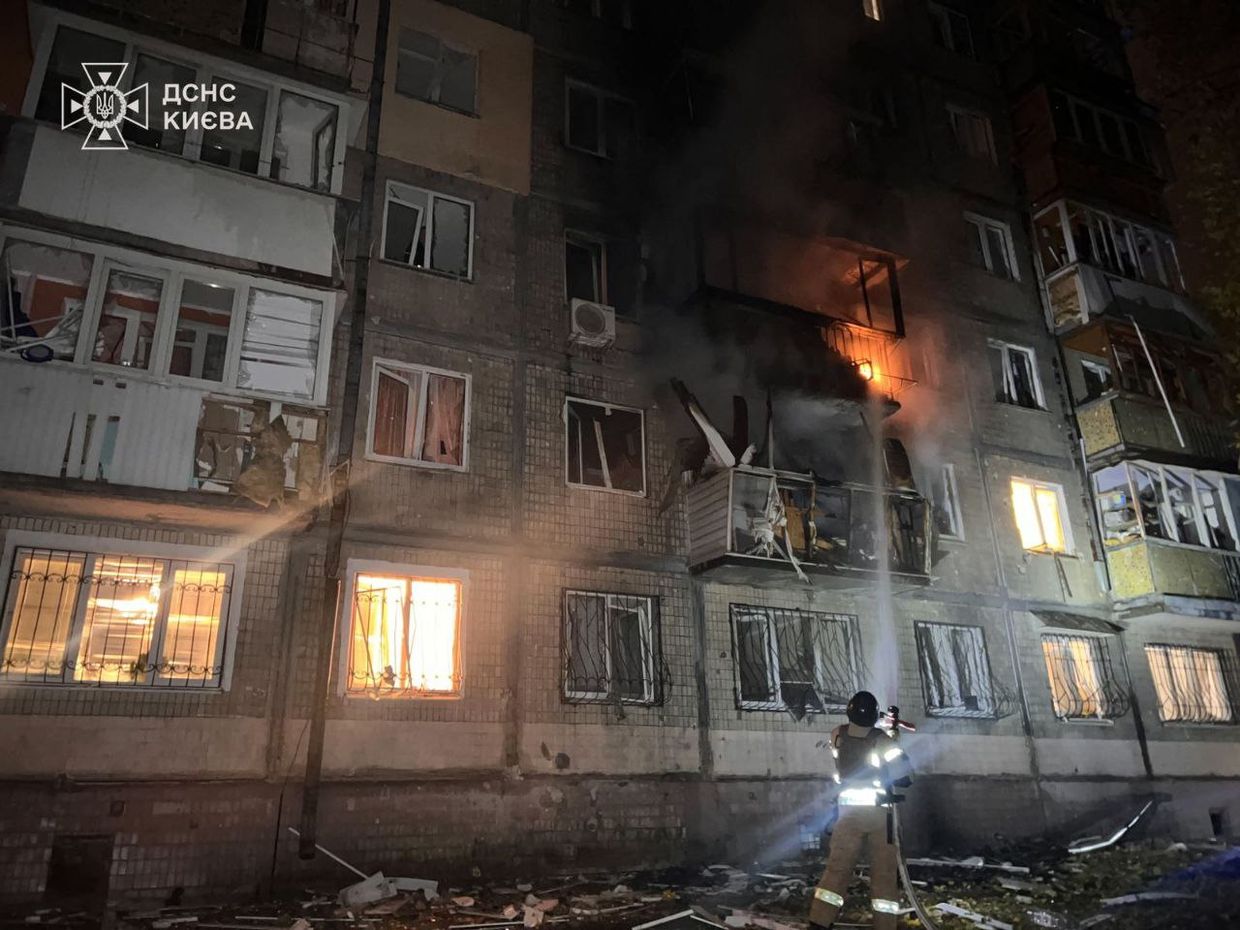Summary of the Day:
Western intelligence officials have confirmed the presence of North Korean troops in occupied Ukraine, marking a significant escalation in North Korean support for Russia’s war effort. Ukrainian and South Korean officials had previously reported North Korean engineering personnel in Donetsk City working on ammunition quality improvement.
Russian forces advanced in multiple areas including Kreminna, Chasiv Yar, Pokrovsk, and Kurakhove. Ukrainian forces achieved a limited counteroffensive success, regaining some positions near Pokrovsk. Russian occupation authorities continue recruiting civilians in occupied territories for military service.
Ukraine and South Korea announced enhanced intelligence cooperation to counter Russian-North Korean military collaboration. The US Treasury and State departments imposed major sanctions on nearly 400 entities across multiple countries involved in helping Russia evade existing sanctions.
The Kremlin is showing signs of uncertainty about the war’s trajectory, struggling to plan for its 2026 Duma elections while simultaneously militarizing various government levels. This contrast suggests Russian leadership is preparing for a long-term conflict with both Ukraine and NATO despite internal political challenges.
Picture of the Day:
 Rescue workers assist an injured woman at an attack site in Kharkiv. Russia bombed a 9-story apartment building in the city, killing a child and injuring at least 29 people. (Oleh Syniehubov / Telegram)
Rescue workers assist an injured woman at an attack site in Kharkiv. Russia bombed a 9-story apartment building in the city, killing a child and injuring at least 29 people. (Oleh Syniehubov / Telegram)
Beyond Ukraine – The March Towards World War
Georgia’s Prosecution Service announced an investigation on October 30 into alleged falsification of the October 26 parliamentary elections, where the pro-Russian Georgian Dream party claimed 54% victory while opposition groups received 37.8%. President Salome Zourabichvili, summoned for questioning, refused to appear and instead presented footage of ballot violations at a press conference, calling the election a “Russian special operation” and urging protests, which many Georgians joined. All four pro-European opposition parties have refused to join the new parliament, while Prime Minister Irakli Kobakhidze dismissed accusations of fraud, claiming such irregularities are common everywhere. The European Union suspended Georgia’s EU accession process due to election irregularities, U.S. President Biden expressed deep concern about democratic backsliding, and the Election Commission has agreed to recount votes at several polling stations in response to widespread accusations of systematic election rigging.
The European Commission announced that Georgia’s EU accession process has been suspended due to the Georgian government’s actions since spring 2024. This decision follows the victory of the pro-Russian Georgian Dream party in the October 26 parliamentary elections, which international observers reported were marred by intimidation and irregularities. EU Ambassador Pawel Herczynski cited Georgia’s lack of progress in combating disinformation, reducing political polarization, and implementing judicial reforms. The ruling party, led by oligarch Bidzina Ivanishvili, has been criticized for moving Georgia closer to Moscow, particularly after passing a controversial foreign agents law that sparked mass protests earlier this year.
Belarusian Security Council Deputy Alexander Neverovsky announced that new security measures for the Belarus-Russia Union State may be discussed at their December 5 meeting.
Microsoft warned that Russian hacker group Midnight Blizzard is targeting U.S. individuals with phishing emails, just one week before the U.S. presidential election. The group, linked to Russia’s Foreign Intelligence Service (SVR), sent thousands of emails to over 100 organizations in government, academia, defense, and NGOs. Microsoft believes the ongoing operation, detected on October 22, is focused on intelligence gathering. The group has been active since 2018, primarily targeting U.S. and European institutions through sophisticated phishing tactics.
The Path to Peace
Kremlin spokesperson Dmitry Peskov has denied reports from the Financial Times about potential talks with Ukraine to mutually halt strikes on energy infrastructure. Despite a Ukrainian official claiming that both sides have recently reduced attacks as part of an intelligence services agreement, Peskov dismissed these reports as “fake news.” The situation remains critical for Ukraine, which has already lost all its thermal power plants and most hydroelectric capacity to Russian strikes between March and August 2024. President Zelensky earlier suggested that Russia’s willingness to stop such attacks could indicate openness to broader peace talks.
Situation On The Land, Sea, and Air in Ukraine
According to Ukrainian Colonel Vladyslav Voloshyn, about 200,000 Russian troops are currently stationed in southern Ukraine and Crimea. While Russia hasn’t formed large offensive groups in the south, they are creating smaller assault units for limited infantry attacks.
U.S. Defense Secretary Lloyd Austin announced that North Korean troops wearing Russian uniforms and using Russian equipment are approaching the Russia-Ukraine border, with Western intelligence officials confirming their presence in occupied Ukraine. According to Austin, approximately 10,000 North Korean soldiers are training in eastern Russia, with 3,000 troops already stationed in Kursk Oblast, just 50 kilometers from Ukraine. This deployment coincides with North Korean Foreign Minister Choe Son Hui’s visit to Russia on October 29, which South Korean intelligence suggests may be related to deploying additional troops. South Korean Defense Minister Kim Yong-Hyun condemned the deployment as a “war crime,” announced plans to send observers to Ukraine to monitor North Korean troop movements, and Austin warned there would be consequences for this military cooperation between Russia and North Korea, which he attributed to Russia’s significant battle losses.
Ukrainian forces destroyed a Russian TOR-M1 air defense system in Donetsk Oblast using Switchblade 600 drones, according to a Ukrainian battalion commander operating in the region.
Ukrainian forces used ATACMS cluster munitions to damage a Russian S-300/S-400 air defense system near Rusakivka in occupied Crimea on October 27-28, as confirmed by video evidence.

Ukrainian Operations in the Russian Federation – Initiative None
Russian forces advanced in Ukraine’s Kursk Oblast, particularly in central Novoivanovka, southeast of Korenevo. While Russian sources claimed additional advances near Darino, Nizhny Klin, Nikolayevo-Darino, Tolsty Lug, and Plekhovo, many of these claims remain unconfirmed. Ukrainian officials reported that Russian forces have switched to using lighter vehicles like motorcycles and ATVs after Ukrainian strikes damaged their heavy equipment.
Approximately 3,000 North Korean troops have been stationed in barracks in Russia’s Kursk Oblast, just 30 miles from the Ukraine border. Ukrainian intelligence estimates the total North Korean deployment at 12,000 troops, while U.S. intelligence puts the number at 10,000. Ukrainian officials express doubt about the troops’ combat effectiveness, citing communication challenges between Russian and North Korean forces. U.S. National Security Adviser Jake Sullivan is reportedly seeking China’s help in pressuring North Korea to withdraw its troops, as Russia’s offensive in the eastern Donbas region intensifies.
Russian state media reported that Corey John Nawrocki, a 41-year-old former US Marine, was killed along with three others in Russia’s Bryansk region on October 27. According to Russian sources, Nawrocki was part of a 10-person Ukrainian intelligence operation. The Russian Federal Security Service (FSB) claims the group included US, Polish, and Canadian nationals. While Nawrocki’s US Marine Corps service record is verified, including awards such as a Bronze Star with valor, Ukrainian and US officials have not confirmed his reported involvement with Ukraine’s International Legion or his death.
Ukraine launched a widespread drone attack targeting multiple Russian regions. Russian officials reported downing 23 drones across Rostov, Kursk, Smolensk, Orel, Bryansk, and Belgorod regions. In Zheleznogorsk, Kursk region, drone debris caused minor fires and damaged buildings. The attack prompted Moscow’s Sheremetyevo Airport to temporarily suspend flights for about 45 minutes as a precaution. No casualties were reported in any of the Russian regions affected.
Chechen leader Ramzan Kadyrov claimed that a drone strike on the Russian Spetsnaz (Special Forces) University in Gudermes, Chechnya on October 29 killed Ukrainian prisoners of war, though he didn’t mention Ukrainian involvement in his initial report and there is no independent confirmation of these casualty claims. He admitted to using Ukrainian POWs as human shields at strategic facilities across Chechnya, which constitutes a war crime under the Geneva Convention. While Ukraine hasn’t claimed responsibility for the attack, a Ukrainian intelligence source suggested the strike may have originated from neighboring Dagestan or Ingushetia due to regional feuds. In response, Kadyrov ordered his commanders to execute rather than capture Ukrainian soldiers. Ukraine has documented over 100 cases of Russia executing POWs since 2022, though the actual number is believed to be higher.
Kharkiv Front – Initiative Russia
Russian forces launched limited attacks near the settlements of Lyptsi and Vovchansk in the Kharkiv region but failed to gain any ground.
Luhansk Front – Initiative Russia
Russian forces made advances east of Kupyansk and west of Kreminna, with confirmed progress near Stepova Novoselivka and Terny. Russia claims to have captured Kruhlyakivka, though this remains unverified. Russian forces conducted operations across multiple settlements including Holubivka, Synkivka, Pershotravneve, and several others along the Kupyansk-Svatove-Kreminna line. Their forces are using both armored vehicles and motorcycles in attacks, though Ukrainian defenses are reportedly holding at the Oskil River. Ukrainian sources report Russian forces suffered 4,000 casualties and lost 150 equipment pieces in the past six months in the Kupyansk area.
Donetsk Front – Initiative Russia
Siversk
Russian forces launched attacks near several settlements in the Siversk area but failed to gain ground. The attacks targeted Bilohorivka (northeast), Verkhnokamyanske (east), Ivano-Darivka (southeast), and Zvanivka (south of Siversk).
Chasiv Yar
Russian forces made progress southeast of Chasiv Yar with the “Akhmat” Spetsnaz group advancing along the Bakhmut-Kostyantynivka highway. While Russians attempted small group crossings of the Siverskyi-Donets Donbas Canal, Ukrainian artillery and drones prevented them from establishing positions. Russian forces also continued attacks near Stupochky, south of Chasiv Yar.
Toretsk
Russian forces attacked Toretsk and nearby Shcherbynivka but made no advances. The “Somali” Battalion and “Sparta” Reconnaissance Battalion led these operations in the Toretsk area.
Pokrovsk
In the Pokrovsk area, both sides made territorial gains. Ukrainian forces recaptured positions near Novohrodivka, while Russian forces advanced near Promin and captured Selydove. Russian attacks continued near multiple settlements including Myrnohrad, Sukhyi Yar, Lysivka, Krutyi Yar, and Vyshneve, though Ukrainian forces successfully defended Novooleksandrivka and Vozdvyzhenka. Russia has concentrated significant forces in this area, including newly transferred naval infantry units from the Kherson region.
Pokrovsk, a key Ukrainian logistics hub in Donetsk, will undergo partial street blockades for defense preparations, according to local military administration head Serhii Dobriak. The city, which has lost 80% of its infrastructure and retains only 11,900 of its pre-war population of 60,000, faces increased pressure following Russia’s reported capture of nearby Selydove, located just 11 miles away. While entry and exit won’t be completely restricted, several areas will be blocked for fortification construction. The city currently maintains 60% power supply and relies on wells and aid organizations for water distribution as evacuations continue.
Kurakhove
Russian forces advanced near Kurakhove, gaining ground southwest of Hirnyk and near the Kurakhivka Central Processing Plant. They reached eastern Kurakhove and launched attacks on multiple settlements including Novodmytrivka, Novoselydivka, Illinka, Berestky, Kurakhivka, Hostre, and Maksymilyanivka. Claims of capturing Kurakhivka remain unverified.
Southwest of Donetsk City
Russian forces attacked several settlements near Vuhledar, including Antonivka, Katerynivka, Dalne, Bohoyavlenka, Yasna Polyana, and Shakhtarske. While Russian sources claimed advances near these areas, including the capture of Yasna Polyana, there is no visual confirmation of these claims.
Zaporizhia Front – Initiative Russia
Zaporizhia-Donetsk Border Area
Russian forces have made a small advance near the village of Levadne in the Donetsk-Zaporizhia border region, according to Ukrainian Southern Forces Spokesperson Colonel Vladyslav Voloshyn. This movement came after what Voloshyn described as persistent Russian attacks in the area.
Zaporizhia Line
Russian forces continue fighting near Robotyne in Zaporizhia Oblast. A Ukrainian brigade spokesperson reported that Russian forces are now using new wire-guided drones with 10-kilometer range, which resist electronic jamming but are vulnerable to conventional weapons.
Kherson (Dnipro River) Front – Initiative Russia
Russian forces continue attacks along the Dnipro River in Kherson Oblast, including the east bank and river islands.
Ukraine News
Russia launched a major aerial attack overnight, using one missile and 62 drones against multiple Ukrainian regions. Ukrainian forces intercepted 33 drones across ten regions, while 25 others were disabled by electronic warfare. The attacks damaged a kindergarten and residential building in Kyiv, civilian infrastructure in Kharkiv Oblast, and a TV tower. Russian sources claimed the strikes targeted military facilities, including the Ukrainian General Staff building in Kyiv, allegedly in retaliation for a previous Ukrainian attack on Chechnya.
According to a September 2024 report by Germany’s Kiel Institute, Ukraine’s air defenses intercept 30% of Russian missiles and 66% of drones. The success rate varies by weapon type: 50% for Kalibr cruise missiles, 22% for Kh-59s and Kh-69s, 4% for Iskander missiles, and less than 1% for Kh-22 anti-ship missiles. Russia reportedly uses over 1,000 glide bombs monthly.
President Zelensky clarified that Ukraine never planned to capture Russia’s Kursk nuclear power plant during their August incursion into Kursk Oblast. While Ukraine initially gained control of about 1,300 square kilometers in the region, they stated their only goal was to establish a buffer zone to protect their border. Russia has responded by moving approximately 50,000 troops to the area. Unlike Russia’s occupation of the Zaporizhzhia nuclear power plant, Zelensky emphasized that Ukraine does not target critical infrastructure.
Ukrainian President Zelensky expressed frustration after confidential military requests were leaked to U.S. media. The New York Times had reported that Ukraine sought Tomahawk missiles (range 1,500 miles) as part of a secret deterrence package. Zelensky clarified that Ukraine would only use these missiles if Russia refused to end the war. The U.S. was reportedly hesitant to provide the missiles due to limited availability. This request comes as Ukraine seeks to secure additional U.S. support before potential changes in American leadership, with Zelensky proposing a five-step victory plan aimed at ending the war by 2025.
Ukraine could join the European Union by 2029, according to EU Commissioner Oliver Varhelyi. The EU has introduced initiatives like the “Growth Plan” and “Ukraine Plan” to help speed up reforms needed for membership. Ukraine, which became a candidate in June 2022, has already made progress on judicial and anti-corruption reforms. The first official accession negotiations between Ukraine and the EU began in June 2024 in Luxembourg. President Zelensky has expressed confidence in Ukraine achieving full EU membership within this timeline.
Ukraine’s Communities and Territories Development Ministry presented a roadmap in Warsaw for partially reopening the country’s airspace, which has been closed since Russia’s invasion in February 2022. The plan, developed with assistance from the U.S. Embassy and various aviation authorities, could potentially involve the airports of Lviv, Uzhhorod, and Kyiv’s Boryspil. While specific timelines weren’t provided, the initiative aims to preserve aviation infrastructure and prepare for eventual civilian flight resumption, though Eurocontrol forecasts airspace restrictions might continue until 2029. Several international airlines, including LOT Polish Airlines, SkyUp Airlines, Turkish Airlines, and Wizz Air, participated in the discussions.
Innocent Victims Of War
The casualty count of civilians in the past 24 hours: (Russian War Crimes)
DEATHS: 8 INJURIES: 76
Russian forces launched a drone attack on Kyiv. Nine people, including a child, were injured when drone debris fell in the Solomianskyi district, causing fires in a residential high-rise and damaging a kindergarten.
A Russian air strike on Kharkiv hit a residential building killing three people – a man and two boys aged 12 and 15 – and injuring 35 others. The attack, reportedly using a FAB-500 bomb, destroyed five floors of a nine-story apartment building.
Russian attacks on two villages in Kharkiv Oblast injured four people, including a child. In Tsaredarivka, a 39-year-old woman was hurt, while in Bezruky, two elderly women and a 10-year-old child were wounded.
Russian forces attacked multiple settlements in Donetsk Oblast, killing one person in Sukhi Yaly and injuring 10 others across the region. The wounded were in Oleksiyevo-Druzhkivka (5 people), Myrnohrad (2 people), and one each in Kurakhove, Lyman, and Druzhkivka.
Russian forces struck Kherson Oblast, targeting infrastructure, a school, a store, and residential areas. The attacks killed three people and wounded 15 others.
Russian attacks on Sumy Oblast injured three civilians – one in the Velyka Pysarivka community, and two in the Khotin community.
A second victim died in hospital following the October 28 Russian missile strike on Kryvyi Rih in Dnipropetrovsk Oblast. The attack damaged multiple buildings, including apartments, a clinic, and a school, initially killing one person and injuring 14 others.
 A multistory apartment building in Kharkiv damaged by a Russian bomb. (Ukraine’s State Emergency Service / Telegram)
A multistory apartment building in Kharkiv damaged by a Russian bomb. (Ukraine’s State Emergency Service / Telegram)
 A residential building damaged in a Russian drone attack against Kyiv, Ukraine. (State Emergency Service/Telegram)
A residential building damaged in a Russian drone attack against Kyiv, Ukraine. (State Emergency Service/Telegram)
Ukrainian Mobilization and Industrial Defense Base
President Zelensky announced that Ukraine is now producing nearly 20 Bohdana self-propelled howitzers monthly, thanks to the “Danish model” of defense partnership. Denmark became the first country to fund direct purchases from Ukraine’s defense industry, helping overcome budget limitations. The Bohdana, with its 42-kilometer range and mobile “shoot and scoot” capability, offers significant advantages over traditional towed artillery by allowing quick repositioning after firing.
Ukraine’s Allies
Ukrainian President Volodymyr Zelensky announced that Ukraine and South Korea are strengthening their intelligence cooperation to counter Russian and North Korean military collaboration, with both countries planning to exchange delegations soon. While South Korean news outlet The Dong-A Ilbo reported that South Korea might provide artillery shells to Ukraine, the South Korean presidential office denied these claims on October 30, stating Ukraine hasn’t requested such assistance. Though South Korean law prohibits sending weapons to conflict zones, President Yoon Suk Yeol suggested this policy might change due to Russia’s growing military cooperation with North Korea. South Korea is sending a delegation to Ukraine this week to share intelligence about North Korean troops, with reports indicating that Russia is preparing to deploy 12,000 North Korean soldiers. Ukraine needs about 75,000 shells monthly to maintain its defense, while Russia reportedly receives about half of its artillery shells from North Korea.
The U.K. will provide Ukraine with £3 billion ($3.8 billion) in annual military support, according to a draft budget presented to parliament. This commitment, announced by Finance Minister Rachel Reeves, maintains the pledge made by former Prime Minister Rishi Sunak and comes in addition to a recent £2.26 billion loan backed by frozen Russian assets. Despite domestic financial challenges, the new Labor government under Prime Minister Keir Starmer has maintained the U.K.’s strong support for Ukraine, which has totaled over $9 billion in military assistance since Russia’s 2022 invasion.
The US Treasury and State departments imposed sanctions against nearly 400 entities and individuals across 17 countries who have been helping Russia evade existing sanctions and supporting its war in Ukraine. The new sanctions particularly target companies in China, Hong Kong, India, UAE, Turkey, Thailand, Malaysia, and Switzerland, restricting the export of dual-use goods and affecting companies involved in Russia’s Arctic LNG 2 project. The measures also target three subsidiaries of Rosatom (Russia’s state nuclear company), four Russian Deputy Defense Ministers, and Anna Tsivileva, Vladimir Putin’s great-niece. While the sanctions target Russia’s circumvention networks and military-industrial complex, analysts note they don’t address Russia’s shadow fleet operations.
President Zelensky announced that the next Ukraine Defense Contact Group (Ramstein format) meeting will occur in the coming weeks. The virtual gathering, originally scheduled for October 12 but postponed due to Hurricane Milton, will be the first leader-level meeting of the group, which includes over 50 countries. During the previous meeting on September 6, which was the group’s 24th gathering since April 2022, Ukraine secured additional military aid from allies including the U.S., UK, Germany, and Canada. Zelensky plans to present his five-point victory plan to the allies during the upcoming meeting.
Life in Russian-Occupied Ukraine
A UN rights report reveals Russia has intensified its use of torture since invading Ukraine, targeting war dissenters, draft objectors, and mobilized troops who refuse to fight. The report, authored by UN special rapporteur Mariana Katzarova, identifies at least 15 unofficial detention centers near the frontlines where hundreds are reportedly tortured. Based on testimonies from survivors, including LGBTQ Russians and released Ukrainian detainees, the report highlights that torture has evolved from a longstanding practice into a systematic strategy for suppressing dissent, with perpetrators rarely facing consequences.
Russia’s VTB Bank has begun offering low-interest mortgages in occupied parts of Ukraine’s Luhansk and Donetsk regions, with plans to expand to occupied Kherson and Zaporizhzhia areas. The state-controlled bank is offering 30-year loans at 2% interest, up to 6 million rubles ($62,000), following Putin’s directive to expand banking services in these territories. This initiative is part of Russia’s broader strategy to encourage Russian settlement in occupied Ukrainian regions, which Putin illegally annexed in September 2022, while local Ukrainians have been forced to flee due to the ongoing war.
Russia News
According to Russian opposition outlet Meduza, the Kremlin is struggling to plan for the 2026 Russian State Duma elections due to uncertainty about the war in Ukraine, with Presidential Administration First Deputy Head Sergei Kiriyenko not yet starting election planning, which typically begins two years ahead. Sources say the campaign strategy depends on whether the war continues into 2026, with different approaches needed for wartime versus peacetime. The political party A Just Russia has already positioned itself for a potential wartime scenario by adopting “patriotic socialism” as its new political direction. The Kremlin continues to militarize Russian government at all levels through programs like “Time of Heroes,” which places Ukraine war veterans in government positions from local to federal levels. While there’s uncertainty about the election planning, the Kremlin appears focused on preparing Russian society and military for potential long-term conflict with both Ukraine and NATO, with the veteran placement program suggesting Russia is preparing for extended military engagement despite possible peacetime messaging for the election.
Russian military bloggers are protesting the deaths of drone specialists in Donetsk Oblast who were forced into assault operations after criticizing their commander. A blogger blamed local Donetsk leaders for misusing these specialists, suggesting it was done to resist Moscow’s control, and called for a military leadership purge.
Three sanctioned Russian tankers carrying liquefied natural gas (LNG) are anchored near Russia’s port of Nakhodka, indicating Moscow’s difficulty in selling its LNG amid Western restrictions. The vessels – Nova Energy, Pioneer, and Asya Energy – previously loaded cargo from Russia’s Arctic LNG 2 facility, which has halted operations due to sanctions. The project, owned by Novatek, was intended to be Russia’s largest LNG plant, but has struggled after China, Japan, and India suspended participation. The U.S. recently imposed additional sanctions on companies involved in transporting equipment and vessels for the project, aiming to reduce Russia’s energy revenues.
Russian War Losses (Today/Total)
| Troops +1310
694950 |
Tanks +19
9156 |
Artillery +58
20013 |
Arm. VEH +17
18450 |
Aircraft
369 |
Heli
329 |
Ships
28 |
Russian Mobilization and Defense Industrial Base
Russian-appointed officials in occupied Kherson Oblast are recruiting Ukrainian civilians for the Russian military, offering an $8,200 signing bonus and monthly salaries starting at $2,400. The package includes combat veteran status with associated benefits.
Russia’s Allies
Slovakia’s Prime Minister Robert Fico gave an interview to Russian propagandist Olga Skabeeva where he criticized Western support for Ukraine and expressed interest in attending Moscow’s Victory Day celebrations. During the interview, Fico claimed there were viable peace agreements in April 2022 that could have ended the war and dismissed reports blaming Ukrainian officers for the Nord Stream pipeline explosions. As prime minister of both a NATO and EU member country, Fico’s pro-Russian statements and desire to restore relations with Moscow have drawn attention, particularly as he echoes Russian talking points about supposed Western fatigue over supporting Ukraine.
Source Material
Institute for the Study of War – understandingwar.org
The Kyiv Independent – kyivindependent.com
Kyiv Post – kyivpost.com
